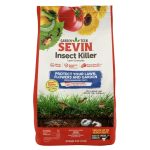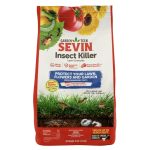If you ever experience a crinkle sound in your garden during the night, then this is because of the presence of mole crickets.
These weird-looking creatures cause damage by tunneling through the soil, eating plant roots, and disturbing the soil’s surface of your garden.
Sometimes it is a major problem when they damage lawns, garden crops, and other plants voraciously. So, behind this situation, a perfect process should be done to complete eradication.
So overall experience, to get rid of mole crickets in your vegetable garden, you can use natural pest control methods such as Dishwashing detergent, Baits, etc. Besides using synthetic processes like insecticidal dust, Granular insecticide, or even Essentria IC3 Insecticide is the most recommended method for getting mole cricket off the garden.
How Do Mole Crickets Affect Vegetable Gardens?
In general, mole crickets can cause the most damage to young, newly planted lawns and garden crops. They can also damage seedbeds and newly transplanted seedlings.
In fact, this creature can make a tunnel through the top 1-2 inches of soil loosening it and uprooting grass plants.
Their top and most significant symptoms are-
- Disturbed soil
- Irregular tunnels
- Dying grass
- Scarred, elevated burrows on the topsoil
Their cutting behavior causes the plants to dry out and die. The mole crickets also eat the roots and shoots of plants where they are tunneling.
5 Best Methods To Get Rid of Mole Crickets in Vegetable Garden
You may apply different methods to deter this hard scale insects from the vegetable garden. But depending on its behavior it doesn’t affect it and further comes again in the garden.
If it happens again and again, then try these methods with scheduled maintenance to solve this problem in the garden. Here are the methods below-
1) Dishwashing detergent
The exoskeleton of insects is made of a waxy substance that repels water. When soapy water comes into contact with this exoskeleton, it breaks down the wax and allows the water to penetrate the insect’s body.
This can cause the insect to suffocate or drown. Dish soap does not kill mole crickets outright, but it can flush them out of hiding so that you can kill them with other methods, such as a shovel or a trap.
To make a soapy water solution to flush out mole crickets, mix two tablespoons of liquid dishwashing detergent with 1/2 liters of water in a watering can.
Then, drench an area of about two square feet with the solution.
As the soap penetrates the soil, mole crickets will pop up to the surface.
You can then kill them or remove them from your property.

2) Granular insecticide
Granular insecticides are a dry form of liquid insecticides. They are a solid particle that contains an insecticide, attractants, and food particles for the target insects.
Granular insecticides are meant to provide long-term control of pests that come in contact with a treated area.
While most mole cricket control methods are effective, the insects are quite resilient and may require several applications to completely eradicate them.
Here are some granular insecticide names that can be useful for works-
- Bifen L/P Insecticide Granules
- Talstar 25 lbs PL
- DeltaGard G Granules

3) Baits
Baits are made with a chemical that is attractive to mole crickets, but deadly to them. Several effective baits are available today. You can use them to easily attract and kill them from the garden.
Mole Cricket Baits: These special baits are like a delicious trap for adult mole crickets. They contain ingredients called carbaryl and indoxacarb, which make the crickets munch on them and then say goodbye.
Nolo Bait or Semaspore: Springtime is when you want to bring out these helpers. As the temperatures start to warm up, apply these to keep mole crickets in check.
Neem Oil or Azadirachtin: These are your summertime friends. Apply them during the summer months to keep mole crickets away from your precious plants.
Molasses Magic: You can make a mixture with 1 part of molasses and 9 parts of water. Then, top it off with canola oil and put it in a small container. Sink the container into the soil so that it’s level with the ground. It’s like a sneaky trap that mole crickets can’t resist.
Doxem IG: This granular bait is a versatile warrior against a whole bunch of pests, both inside and outside.
Tips: Try Mole Baits Shaped Like Tasty Worms or Grubs. Moles Find Them Irresistible, and Within 12-24 Hours, They Bid Farewell.
Read More: How to Keep Chipmunks Out of Garden?
4) Insecticidal dust
Insecticidal dust is a convenient product that comes pre-mixed with two important components. Typically, it consists of an active ingredient and an inert carrier.
This carrier is often made from finely ground substances like talc, clay, or nutshell flour.
The active ingredient, on the other hand, is usually present in a relatively low concentration, typically around 10% or less by weight.
What makes this combination effective is that the carrier helps to spread out and dilute the active ingredient, ensuring that when you apply the dust, it covers the treated surface evenly, making it a practical choice for pest control.

You can use diatomaceous earth (DE) is a powder that is created from the fossilized remains of diatoms, a type of algae. It is a natural substance that is non-toxic to humans and pets, but it can be harmful to insects.
They are ready to use and easy for the gardener to apply directly.
Here are a list of some insecticidal dust name-
| Product Name | Duration of Effectiveness | Usage |
| D-FENSE Dust Insecticide | Up to 8 months | General long-term pest control |
| Protect-Us Insecticidal Dust | Kills pests on contact | Immediate pest elimination |
| Drione Dust Insecticide | Up to 6 months | Residual pest control |
| Viper Dust | For cattle, livestock, horses, swine, and dogs | Livestock and pet pest management |
5) Essentria IC3 Insecticide
it is an organic insecticide which is a mix of various horticultural oils (Rosemary, Geranio, Peppermint Oil) that is safe for humans.
It is often marketed as a “bed bug killer” but it can be effective against crickets when the plants are treated regularly.
Besides, its pest-fighting qualities, Essentria IC3 offers the advantage of being environmentally friendly and less harmful to beneficial insects, making it a responsible choice for pest management in gardens and homes.
Frequently Asked Questions
Do Mole Crickets Eat Vegetable Plants?
Yes, mole crickets eat vegetable plants. These omnivores eat a variety of plants, including vegetables, grasses, and ornamental plants. They eat the roots of plants, which can cause damage to the plants above ground.
Mole crickets have been known to attack-
- tomatoes,
- sweet peppers,
- eggplants,
- carrots,
- Potatoes,
- sweet potatoes,
- cabbage, and
- peanuts.
They also attack tobacco seedlings.
Read: How to Keep Iguanas Out of Your Vegetable Garden? ( Top 10 Proven Methods)
What Keeps Mole Crickets Away?
Mole crickets are most active during the spring and summer seasons.
If you want to keep them in check, here are some things you can try:
- Use Dominion 2L and Bifen LP Granules preventatively.
- Try liquid insecticides like bifenthrin, imidacloprid, or permethrin.
- Consider Baygon or diazinon sprays.
- Introduce beneficial nematodes to your soil.
- Ensure moist soil before applying treatments.
- Apply Bifen and Imid in June and August for ongoing control
What Is The Fastest Way To Kill Mole Crickets?
You can actually get those sneaky mole crickets and their young ones out of the soil using a simple trick with soapy water.

You can pick a time either early in the morning or late in the evening when mole crickets tend to be more active.
Take your soapy water mixture and gently pour it over an area of your garden that’s about 1 to 2 square feet in size.
The soap in the water will make the crickets come up to the surface, making it easier to catch or deter
How Do You Kill Mole Crickets Naturally?
To naturally kill mole crickets, try using synthetic insecticides. It will kill them after application.
Conclusion
While there are various effective methods available, my suggestion is to opt for direct chemical approaches.
I’ve observed many instances where DIY methods didn’t yield satisfactory results.
If you require swift action, it’s best not to delay with natural remedies; instead, consider synthetic or chemical insecticides for quicker results.
Once the problem is under control, you can gradually transition to using natural methods over time.
Latest:
- How to Store Mizuna: Expert Tips for Freshness
- When to Harvest Mizuna: Perfect Timing Tips
- What Does Mizuna Taste Like? Unveil the Mystery!
- When to Plant Mizuna: Best Tips for a Lush Garden
- How to Plant Mizuna Seeds: A Step-by-Step Guide

I am a graduate of Bangladesh Agricultural University, where I delved into various agricultural disciplines, equipping me with a profound understanding of agriculture. Beyond academics, I have hands-on experience in gardening and crop cultivation. My passion is to embrace sustainable farming and horticulture. With a BSc in Agriculture, I am dedicated to promoting environmentally conscious and efficient agrarian practices.
Bachelor of Science (BSc) in Agriculture (Hons.)
Master of Science. (Sustainable Agriculture & Food Security ) (MS)
Bangladesh Agricultural University




